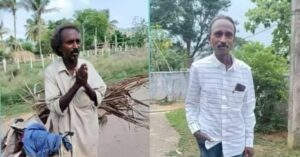TBI Water Week: Back To Life – The Story Of A Lake
In concluding our Water Week, we couldn't think of a more apt story than one that fills our hearts with gladness, and an old, defunct lake with water! Read how the efforts of an Environmental outfit, together with the co-operation and willingness of the villagers, revived a lake thought to be dead, and turned around the fortunes of a small region.
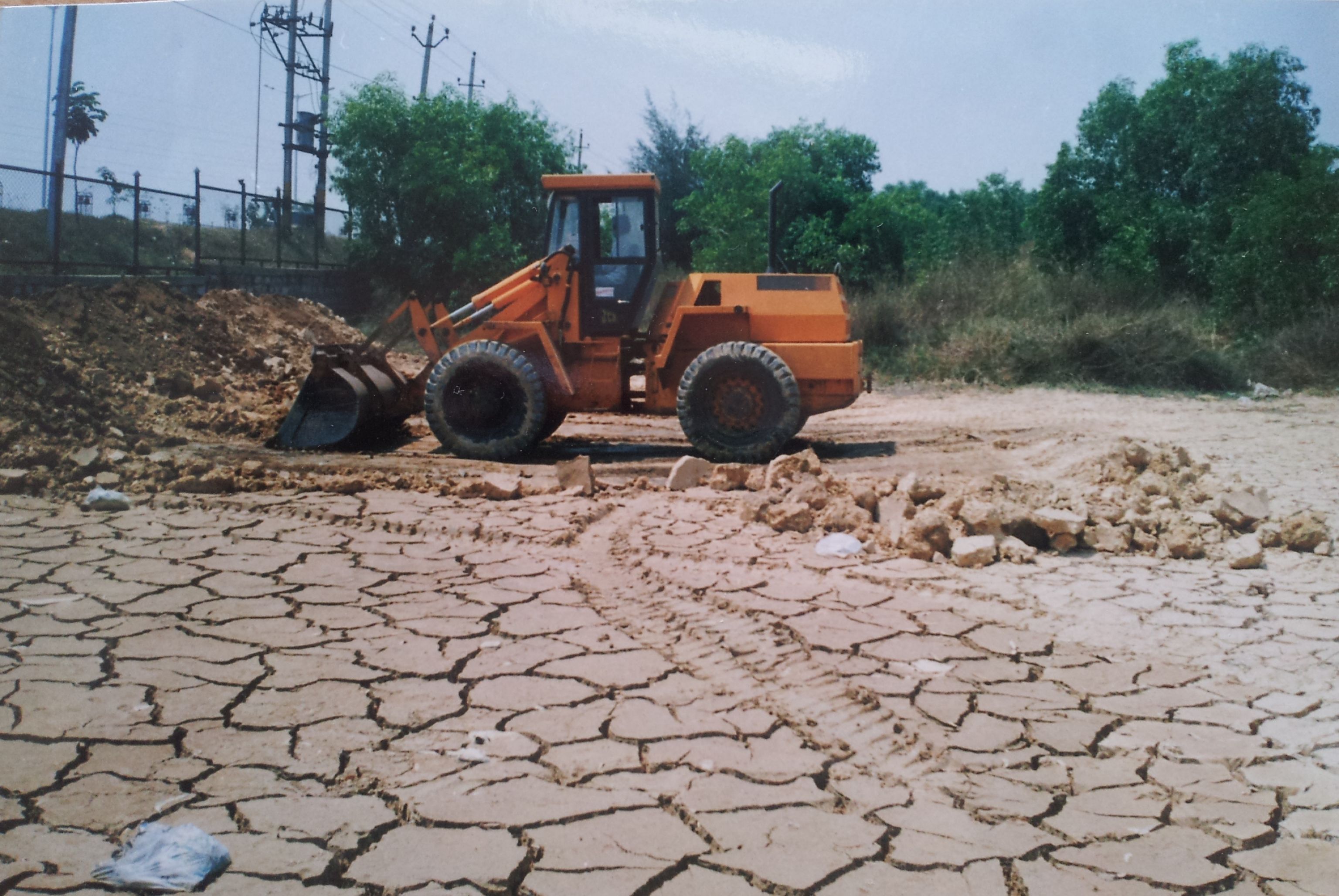
In concluding our Water Week, we couldn’t think of a more apt story than one that fills our hearts with gladness, and an old, defunct lake with water! Read how the efforts of an Environmental outfit, together with the co-operation and willingness of the villagers, revived a lake thought to be dead, and turned around the fortunes of a small region.
World Water Day is celebrated every year. And every year we re-dedicate ourselves to improving the quality and quantity of water in the world. But then, are we doing enough?
The Government comes out with grand plans for lake development and river cleansing. Very few projects are implemented. Individuals and NGOs try to do something in a small way and plod around in bits and pieces. But, I recently came across a superb effort in lake restoration that makes me optimistic. I wish to share the details with you.
Ecoserve is a small environmental outfit in Bangalore focusing on Rain Water Harvesting and water development projects. It is run by a small band of enthusiasts led by G. Manjunath.
In one of their surveys of old and abandoned water bodies in South India, they came across an old lake bed in Guntur, Andhra Pradesh, close to the river Krishna. Over the years, the lake had vanished and the bed had dried up and cracked. Ecoserve offered their services to the local people and soon found that they were very keen to bring the lake back to life.
A survey was conducted of the topography and the catchment areas. Field investigations found that the water feeder points were choked and obstructed. A discussion with the local people indicated that the lake did catch some water whenever it rained, but the percolation loss in the lake bed was high and soon the lake dried up.

Soil percolation tests were conducted at site and it was found that in fact the pit water retention was hardly for 10 minutes. The question was how to retard percolation and hold water. An answer had to be found which was technically sound and economically viable.
A technical data search by G. Manjunath revealed a methodology for lake bed flooring using natural earth and clayey soil. Elaborate methods of layering, leveling and compacting had to be adopted. It was decided to conduct tests by modelling quantities and procedures. Three trial pits were made first at site in Guntur, Andhra Pradesh and again in Jayanagar, Bangalore in 2006. Three different mixtures of earth and clay were layered, leveled and compacted on the floors. The pits, which were fairly large, were filled with water and the percolation times were logged.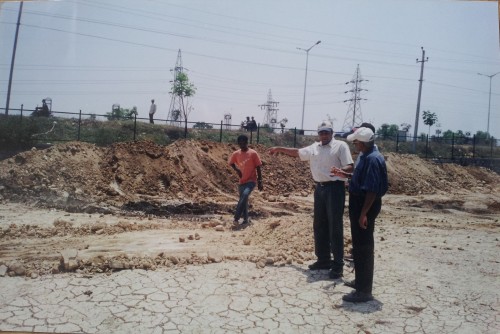
Two of the pits showed reduced percolation, but not too significant. The third pit, however, showed remarkable results. The percolation rate reduced by over 95 %. The floor layering data was cross-checked and the tests were repeated twice. The results were consistent and the fall in percolation rate was phenomenal.
Estimates were prepared and proposals submitted to the Gram Panchayat and local people at site. The methods of funding the project were discussed and many options evaluated. It was decided to propagate the idea with local and nearby companies and industries as well as the Government and individuals. A sustained campaign was launched and soon results started appearing in the form of interest and pledges of assistance. The enthusiasm snowballed and the project took off.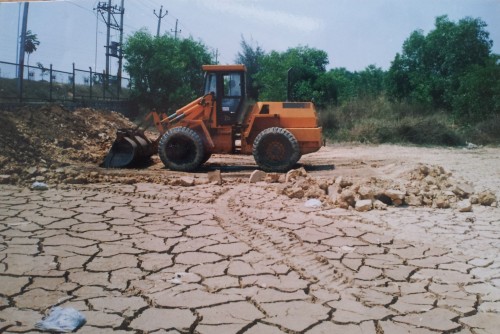
For over a year the lake bed was dug up, carved and excavated. It was covered with lake bed earth, treated and mixed soil and later leveled and compacted. Bunds and retaining walls were built and landscaped.
The lake area is around 1500 square metres and can collect 25 lakh litres of water. The feeder canals from the rain catchment areas were cleaned and re-contoured. The link gullies from the distribution canal of the river Krishna to take up river overflow water were set up.
The first rain was absorbed by the soil on the lake bed and a small puddle was formed. Overflow water from the river Krishna flowed in and it formed a small pond.
The second rain gave dramatic results. The lake filled up and the very sight was thrilling. Today it has been two years since the work was done and the lake is brimming with water. It is in its majestic glory and full of life. The photograph was taken in February 2009 when water was scarce in the region.
Manjunath says,
Before the treatment to the floor of the lake, the percolation loss was heavy. Within 10 minutes all collected water was lost. Now, after four layers of treatment using natural earth and clay mixtures the percolation loss has reduced by 95 to 99 %. The evaporation loss is also negligible.
The local people have future plans for the lake. The water will be drawn to a filter house, cleaned, purified and pumped to nearby villages and towns as safe drinking water. The rains and the overflow of the river Krishna will replenish the water in the lake.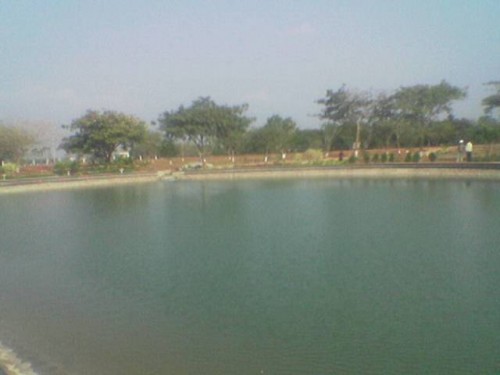
The old lake in Guntur, Andhra Pradesh is now no longer dry. It is flush with water. The total cost of the project came to Rs 15 lakhs – less than a rupee a litre.
It was funded as follows:
- 50 % by Corporate sponsors
- 25 % by Government grants
- 25 % by local people and individuals.
Can a similar lake – old or new in a village or town anywhere in India be brought back to life? Are the local people keen to resurrect it?
The answer is yes.
For more details contact: [email protected] or [email protected]
Let people work together to catch water where it falls and bring beauty back to all lakes and water bodies. Water is life, and where there is life there is hope.
This story made me
- 97
- 121
- 89
- 167
Tell Us More
We bring stories straight from the heart of India, to inspire millions and create a wave of impact. Our positive movement is growing bigger everyday, and we would love for you to join it.
Please contribute whatever you can, every little penny helps our team in bringing you more stories that support dreams and spread hope.








